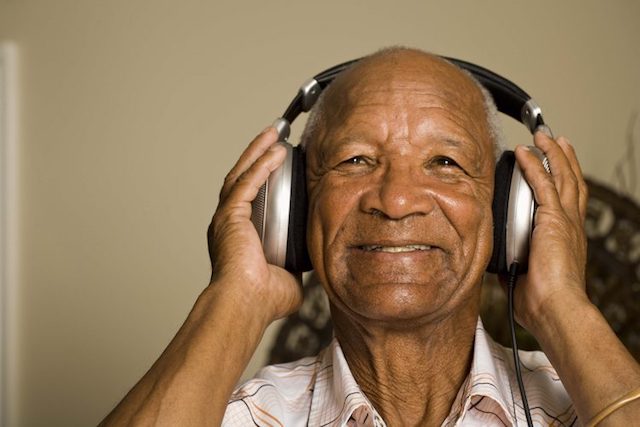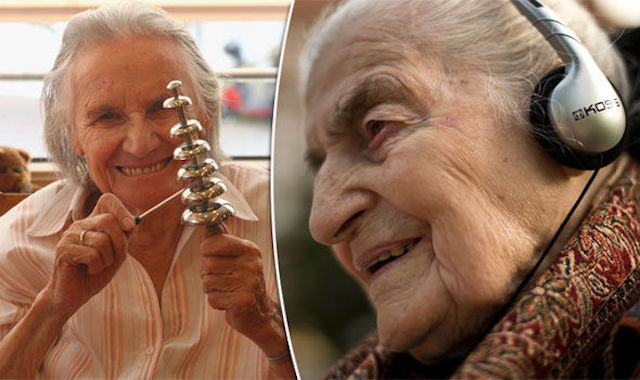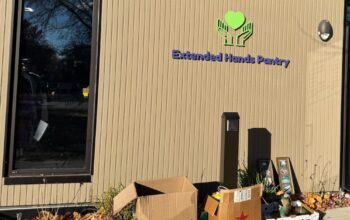Twinkle, twinkle, little star. How I wonder what you are.
Have you ever been listening to a song and it brings back a vivid memory from years before?
In the case of “Twinkle Twinkle Little Star,” this may bring back memories from childhood, such as parents singing, siblings playing or the smell of homemade fried cheese curds.
Music & Memory is a non-profit organization that sees this reconnective power of music, and helps individuals with dementia live more fulfilling lives with their loved ones across the U.S. Executive Director Dan Cohen gained his vision, in 2006, when working as a volunteer in nursing homes. During this time, Cohen observed the healing power of music, and how music improved the wellbeing of individuals with dementia.
The Science of Memory
The science behind music and memory backs-up Collin’s initial observations.
“Songs that were a part of your life, especially during that part of your life when you are a teenager or a young adult, becomes very encoded with emotional context as well. Particularly songs will bring back memories of who you were with, what you were doing, how you felt, what the smell in the air was, where you were, all the different things that become attached to the memories of a particular song,” Kristen Felten, Dementia Specialist in the Office on Aging with WI DHS, said.
Dementia is an umbrella statement for different types of memory loss. Alzheimer’s is the most common form of dementia with about 70 percent of all dementia being classified as Alzheimer’s.
“One of the first symptoms of Alzheimer’s disease is short term memory loss. It is common for people to forget particular words and to lose the train of a conversation,” Felten said.
Memory loss occurs as Alzheimer’s disease kills brain cells in areas of the brain that store memories.
“[The hippocampus] is the part of the brain that is responsible for converting things that are happening to memory storage,” Felten said.
Alzheimer’s disease attacks the hippocampus, which makes individuals unable to turn experiences into memories.
“Individuals lose their ability to recall what happened just a short time before. It becomes impossible for people to remember things that happened day to day,” Felten said.
Part of the reason music works so well with memory is due to different types of memory individuals create. It’s an individual’s emotional memories that are triggered by music.
“Emotional memories are memories captured in a different part of the brain. Music is a powerful art form that then has emotional memories attached to it,” Felten said. In addition, memories that are associated with songs lasts for a long time, even through the progression of Alzheimer’s and dementia.
How to Choose the Music
The way music is chosen depends on how far along the individual is with Alzheimer’s. Creating a playlist while a person is healthy is ideal. If a person is able to, have them work with family and friends to select songs to add to their playlist. If a loved one is not able to help create the playlist, family and friends can step-in to select songs.
“If it’s early on, then [patients] can actually help to create that list. Even if they’re not able to recall the name of the song or the name of the artist, they may be able to point to era, particular years, particular types of music that they like,” Felten said.
Any kind of information individuals can provide about their musical tastes can help family and friends determine which songs to use.
“We go through an interview process and gather information such as where they grew up, if they were in a choir at church, what branch of military, or if they had a college fight song. We try to gather information talking with family and friends,” Julie Hyland, Director of Wisconsin Music & Memory, said.
If an individual is non-communicative, Music & Memory has ways to help family and friends determine what songs to select.
“If someone is noncommunicative we try to be as much as a detective as possible and as much social history as we can obtain because some people don’t have family or friends to share that information with,” Hyland said.
Music & Memory uses clues such as age, mementos, childhood upbringing, among other techniques to find music from an individual’s high school and college years. Staff also make observations about what seems to get a person’s attention. This can sometimes be a quick and easy process, while other times it can be a slower, more involved process, depending on the individual.
“Ultimately it is a trial and error type of adventure. If it is a special song they will have a reaction to listen to it,” Felten said.
After the interview process, they start to play samples of music to continue to open the dialogue. While the music is playing, staff watch to see the reactions of people and determine if a particular song is a good fit for them. They often use iTunes as well as YouTube, especially for the visual component.
“Right now, our biggest push is to look at ways to start the conversation of creating personalized playlists while people are living at home. Our goal is to get people to stay at home as long as they can,” Hyland said.
Music & Memory seeks to serve patients at home and have them remain at home as long as possible. Individuals can begin their personalized playlist while still living at home, and if someone then needs to transfer into a nursing home or assisted living facility, the organization re-evaluates the playlist when that time comes.
Helping Patients and Families
Music & Memory helps patients with dementia in a variety of ways.
“[Music] can activate and engage individuals with dementia who have begun to shut down and become non-communicative, non-engaged, not necessarily very present; it can engage them and activate them in a sense that it can help them to access more parts of the brain,” Felten said.
Many parts of the brain are activated when listening to music, rather than just one location being activated, like with other things. Music can help people to be more engaged and present with the people and events around them.
“At the same time, somebody who may be frustrated and not understanding what’s happening for them and become sort of agitated; listening to their favorite music can help them to calm down and that can also be a big benefit for families and caregivers when they struggle to find ways to help people with dementia and Alzheimer’s disease to feel comfortable as the disease progresses,” Felten said.
Hyland explained an instance where Music & Memory organized live polka music; people would come into the room with walkers and canes, but when the music started playing people were able to move freely without them.
“Music makes you forget your ailments at least for that moment in time, it gets you moving and your body is ready to have that experience, you have the positive endorphins running through your body. There is a tremendous amount of power in music,” Hyland said.
Growth
Wisconsin adopted the program in 2013 and the organization has already been invited to work in more than 300 nursing homes statewide.
“[Wisconsin adopted it as an] initiative by the department of health services to reduce the use of antipsychotic medication for those with a dementia diagnosis in nursing homes,” Hyland said.
After seeing a Youtube video about how Music & Memory positively impacted the lives of others, Hyland and some of her colleagues decided they needed to enact this program for people in Wisconsin. They wrote a grant and were approved which helped the program enter assisted living, veteran’s homes, hospitals, adult day centers and hospice programs.
“There is desire for settings beyond nursing homes, to be able to adopt the program and use it, so such as in assisted living facilities, adult daycares, but also, more importantly, to all of the family caregivers that are out there,” Felten said.
After Wisconsin adopted the program, over 20 states have followed its lead. In total, there are 4,000 organizations worldwide including countries such as Israel, Australia and the Netherlands.
“The concept is something that seems so simple, and yet the results can be so powerful,” Felten said.







